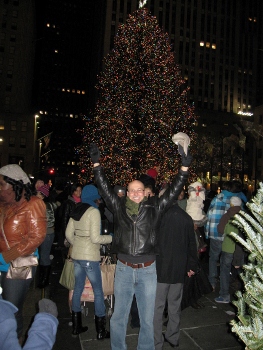-
- 15
Nov - (0)
Traffic
The Electronic Health Record (EHR) is a traffic cop.
When I consider how many different sorts of traffic there are in a mental health or addictions treatment facility, I quickly become amazed with successful organizations of professionals. Sometimes it seems like it should be a magnified Three Stooges bit, there’s so much traffic. Just off the top of my head, there are 5 types of traffic that can be managed by an EHR.

- • Consumer traffic
- • Room traffic
- • Professional traffic
- • Administrator traffic
- • Data traffic
Without managing the traffic, the facility just doesn’t run smoothly. Manyt facilities have a person who guides people to where they should be, is really good at what they do, and that person becomes known as the “go-to” person by professionals and consumers alike. That’s fine except when they’re out sick, or quit, or have a fit, or whatever. Reality gets in the way of the human traffic cop, and in this field, the EHR is a great tool to manage the traffic patterns I mentioned.
Consumers are likely not be aware of it, but in a mental health facility, their movements are planned; guided and recorded in the EHR. First, there’s the scheduled or unscheduled event…either way, the EHR can match up the right professional with a consumer to fill the need for that visit, whether it’s a regular counseling session, an HIV education session, or a visit with a nurse. Once an event is scheduled in the EHR, the front desk person can guide the consumer to the right place for the meeting; an effective scheduling module keeps people from bumping into each other in rooms that should have been reserved; reservations are in the EHR, and everybody involved in an encounter knows where to go, when, who will be in the room, and when they need to exit. Furthermore, when a room is freed up, the EHR has live information for a good place to have an impromptu meeting.
Having visited a lot of clinics and multi-professional offices, I’ve seen a ton of mis-scheduled rooms, complete with usurpers who try (sometimes effectively) to abscond with these valuable resources because the room was double booked. Or not booked according to Hoyle. Sometimes even professionals will try to beat the system. The problem is that valuable professional time that could be spent treating the consumer is too often diverted to searching for a place to get together or spent trying to get somebody else out of the spot they reserve.
Professionals in treatment generally want nothing more than to help the consumer, whether it’s a group therapy, a nurse’s session, physical therapy or any of a myriad of treatment options available in our sector these days, they just want to do their job. All too often, a problem erupts when consumer and professional are mis-scheduled…the wrong counselor can get matched with the consumer, or the room to meet in isn’t available or can’t be found, or the professional is double booked and both consumers show up in the same room. There are more examples, all of which can be avoided if time, place, professional and consumer are matched up in a good EHR scheduling module.
A good scheduling module will also know when a consumer is a no-show, and the professional’s available or a drop-in visit from a different person, perhaps in the room that freed up in the earlier example above.
Notes, treatment plan updates and other treatment documents that need to be updated resultant to a consumer’s visit can all be tied to a good scheduling module. Managing the traffic of documentation is the key job of an EHR.
That good scheduling module also has the ability to assure correct charges for services can be made once an event happens…so traffic through the billing office is also managed by the EHR. It’s easier to deal with insurance companies in billing disputes if all the documents are tied together from the admission, through treatment, to discharge.
All this connectivity makes for good statistics that most administrators love. The figures on how well professionals’ time is managed, how quickly a consumer gets served, and other benchmarks all tie together into a neat little bow that help manage organizations of professionals, keeping the lights on and paychecks flowing when the baby needs shoes. In fact, when a facility needs more room, the executive director can prove it to the board of directors and expand the facility.
Not bad work for a traffic cop.
- 15

Leave a Reply